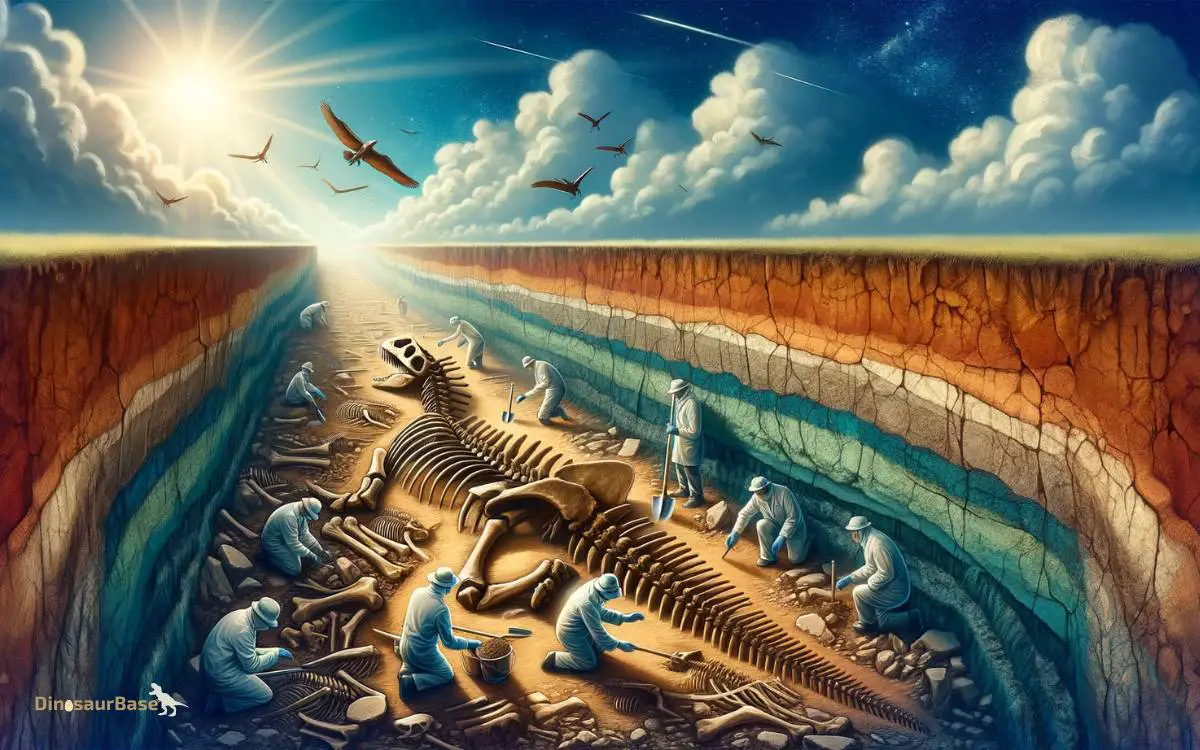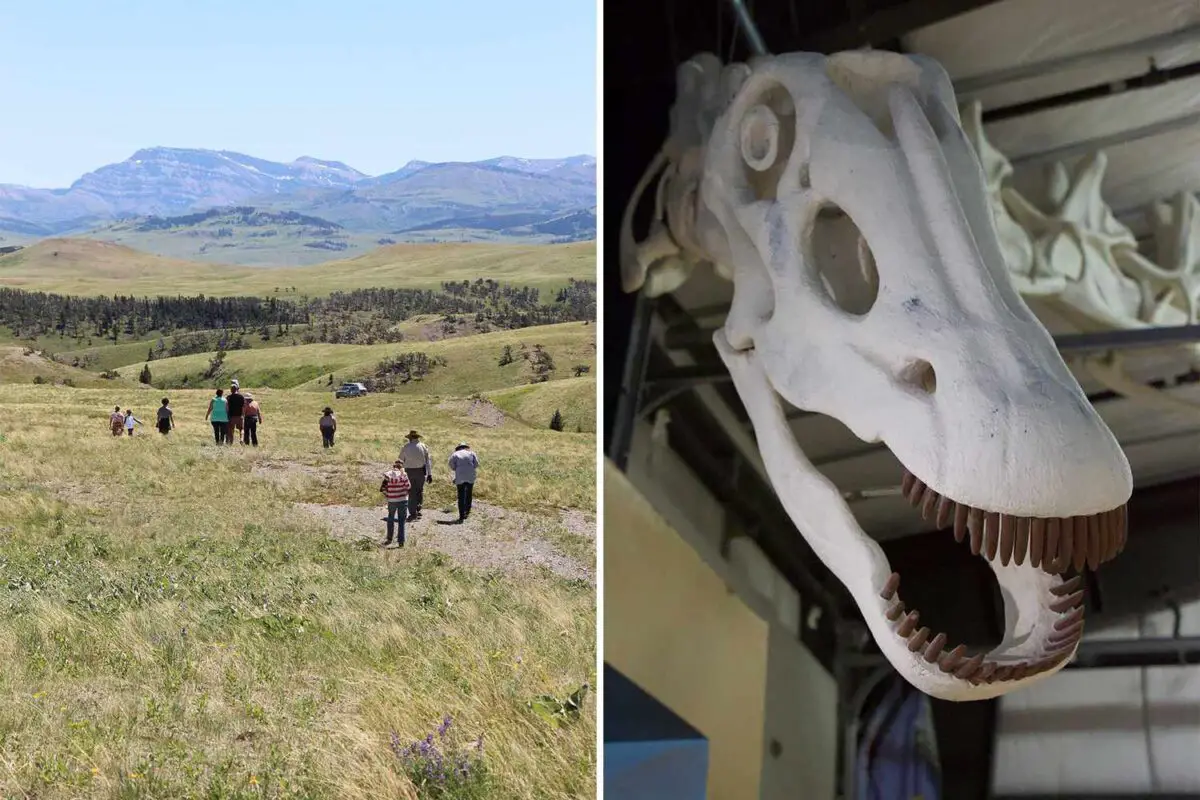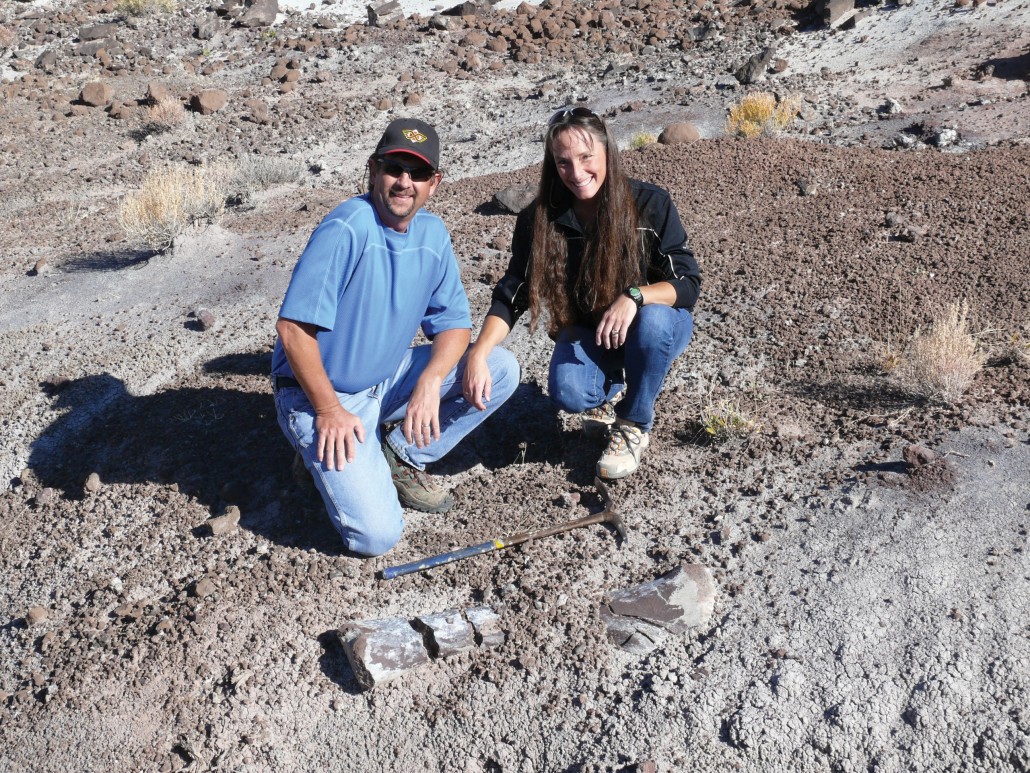How Far Down Do We Find Dinosaur Bones: A Digging Guide
Dinosaur bones are typically found at depths ranging from a few centimeters to over 100 meters. The depth varies based on geological and environmental factors.
Excavating dinosaur bones is a fascinating journey into Earth’s ancient past. Embark on this scientific adventure and you might unearth remnants from the Mesozoic Era, stretching from 65 million to over 230 million years ago.
Uncover the secrets of the prehistoric landscape where dinosaurs once roamed by digging through layers of sediment.
These sedimentary layers act as a timeline, capturing the eons within their strata. Enthusiasts and professionals alike meticulously remove these layers, revealing the resting spots of dinosaur fossils.
The depth at which these treasures lie is dictated by numerous factors, including the type of sediment, the age of the stratum, and tectonic shifts. Each dig offers an opportunity to piece together the story of our planet’s remarkable history.
As science and technology advance, so do the methods of discovery, allowing for more precise extraction and preservation of these paleontological wonders.

Unearthing Prehistoric Giants

Imagine walking on ground full of secrets from a world long gone. Below our feet lie remnants of creatures that roamed the Earth millions of years ago.
Giants of the prehistoric era are waiting for us to discover them. Let’s dive into the depths where dinosaurs once ruled and understand the digs that reveal their past.
The Fascination With Dinosaur Remains
People love mysteries and dinosaurs are one of Earth’s greatest. Each bone tells a story of ancient life, pushing us to learn more.
Children dream of beasts from storybooks while scientists piece together Earth’s history. This burning curiosity sparks countless digs around the globe.
- Excitement of the unknown: Each discovery brings a piece of the ancient puzzle to life.
- Advances in technology: Tools help us dig safer, deeper and uncover more.
- Educational value: Finds teach us about evolution and our planet.
Key Discoveries Shaping Our Knowledge
Dinosaur bones unlock chapters of the planet’s story. Here are some significant finds:
| Discovery | Location | Impact |
|---|---|---|
| Tyrannosaurus Rex | North America | Revealed the predator’s dominance. |
| Velociraptor | Mongolia | Showed intelligent pack hunters. |
| Stegosaurus | North America | Gave insight into herbivore defense. |
Every find, from gigantic skeletons to tiny fossils, reshapes our understanding of these ancient beasts. Researchers can make new theories and answer big questions. These achievements push science and imagination to new heights.
The Depths Of Dinosaur Discovery
Unearthing the past is like peeling back the layers of Earth’s grand history. Dinosaur bones rest in these ancient strata, veiled by time and rock.
But what decides how deep they lie? Let’s excavate the facts and uncover the depths at which these prehistoric giants settled.
Factors Determining Bone Burial Depth
Dinosaur bones find their resting places at various depths. A myriad of factors influences this final burial space.
Below, key elements play a role:
- Soil Composition: Firmer soils can keep bones closer to the surface.
- Erosion: This can either expose bones or bury them deeper.
- Tectonic Activity: Shifts in the Earth’s crust can push bones far down.
- Human Activity: Digging and construction can relocate these fossils.
Geological Time And Sediment Layers
Dinosaur fossils hide within sediment layers, each telling a story. Discover the timeline where these layers formed and their connection to fossils:
| Period | Years Ago | Typical Depth |
|---|---|---|
| Cretaceous | 145 to 66 million | Varies widely due to geological processes |
| Jurassic | 201 to 145 million | Often deeper, depending on erosion and plate tectonics |
| Triassic | 252 to 201 million | Generally the deepest, subject to Earth’s dynamic changes |
A deeper dive into these layers reveals pockets where time has preserved the ancient kings of the land. Exploring further, we challenge the secrets of the deep, seeking the remnants of a world long gone.
Digging Techniques And Tools
Peeling back the layers of time, digging techniques and tools are essential for unearthing the secrets of the past. In the search for dinosaur bones, specific strategies and equipment come into play.
These instruments and methods allow paleontologists to carefully reveal the giants that walked the Earth millions of years ago.
Standard Excavation Methods
Standard excavation techniques form the backbone of any paleontological dig. They ensure the safe recovery of fossils.
These are some common methods:
- Surface prospecting – Scanning the ground for exposed fossils.
- Mapping – Documenting the exact location of finds.
- Brushing and picking – Carefully removing dirt around fossils.
- Plaster casting – Encasing large bones for safe transport.
Key tools for these methods include:
| Tool | Use |
|---|---|
| Brushes | Gently clean around fossils |
| Picks | Remove harder dirt and rock |
| Trowels | Scrape away soil layers |
| Plaster | Secure specimens in casts |
Advanced Technologies In Paleontological Digs
Advanced technologies revolutionize the way we dig for dinosaur bones. These innovations include:
- Ground-Penetrating Radar (GPR) – Detects fossils without digging.
- Lidar Scanning – Creates a 3D map of the dig site.
- CT Scanning – Looks inside rocks without breaking them.
- Drones – Surveys large areas from the sky.
These tools enable teams to locate fossils quickly and with precision, minimizing the risk of damage during excavation.

Credit: www.amazon.com
Famous Fossil Sites Around The World
Unearthing ancient relics, dinosaur enthusiasts often ask, “Where do these prehistoric giants slumber in the Earth’s vast layers?” World-famous fossil sites offer answers, inviting us on a thrilling journey through time.
In these remarkable locations, the Earth relinquishes its grip on secrets millions of years old, offering a glimpse into an era when dinosaurs reigned supreme.
North America’s Fossil-rich Badlands
The Badlands paint a picture of North America’s prehistoric past. Rugged landscapes hide secrets in sedimentary rocks, beckoning paleontologists and adventurers alike.
Marvel at the variety of finds, from T-Rex to Triceratops, as these sites continue to shed light on ancient life.
- Montana: Renowned for the discovery of Montana’s T. rex, a treasure trove of skeletons.
- South Dakota: The Hell Creek Formation, known for well-preserved fossils, offers a rare look at Cretaceous creatures.
- Alberta, Canada: The Dinosaur Provincial Park boasts one of the densest dinosaur bone deposits, with over 150 complete skeletons discovered.
Gobi Desert: A Paleontologist’s Paradise
The Gobi Desert, spanning from China to Mongolia, is a gold mine for fossil hunters. Rich in discoveries, the desert’s layers reveal raptors, giant sauropods, and the first dinosaur eggs ever found. Its high yield of specimens makes it a paleontological mecca.
| Significant Finds in the Gobi Desert | |
|---|---|
| Velociraptor | Encountered a Protoceratops in the infamous ‘fighting dinosaurs’ fossil. |
| Psittacosaurus | A small, beaked dinosaur offering clues to bipedal movement. |
| Oviraptor Eggs | These nests changed the notion that dinosaurs were not nurturing parents. |
Analyzing And Preserving Dinosaur Remains
Unearthing dinosaurs is like opening a time capsule from a bygone era. It’s not just about finding these ancient creatures; it’s also about analyzing and preserving their remains. From the moment a fossil is discovered, the journey of conserving history begins.
Scientists meticulously work to ensure that these prehistoric treasures provide clues to our planet’s past and remain intact for future study and awe.
From Extraction To Examination
The discovery of a dinosaur bone is an exhilarating event. The next step is careful extraction. Teams of paleontologists use various tools, from brushes to chisels, to gently free the fossils from their rocky graves without causing damage.
During extraction, documenting and mapping are crucial. It tells us where each bone comes from and how the dinosaur might have lived.
Conservation Of Dinosaur Fossils For Science And Education
After extraction, fossils undergo preservation. This ensures they survive not only the journey to research facilities but generations to come.
Techniques include applying consolidants to stabilize the bones. Fossils are then often replicated with casts so that originals remain untouched.
These replicas can be shared around the world for educational purposes, inspiring new generations of dinosaur enthusiasts and scientists alike.

Credit: geology.utah.gov
Legal And Ethical Considerations
When we dive into the past, we must also respect the present. Excavating dinosaur bones is not just about digging into the earth; it’s also digging into legal and ethical realms.
This section intends to shed light on the significant aspects of regulations and ownership that surround fossil excavation.
Regulations On Fossil Excavation
Fossil hunting can be thrilling, but it’s bound by rules. To preserve history, countries have laws that fossil hunters must follow.
These regulations often dictate where and how you can dig, what tools are permissible, and whether you need a special permit.
- Permits: Required in many areas, especially on government land.
- Locations: Some lands are off-limits to protect natural heritage.
- Tools: Restrictions on tools to prevent damage.
- Reporting: Finds often must be reported to authorities.
The Debate Over Public Vs. Private Ownership
The question of who owns dinosaur fossils can be complex. Public lands mean the government often claims fossils.
Private land presents a different case; the landowner usually owns the bones. This can spark debates, as some argue these pieces of history belong to everyone.
| Public Land | Private Land |
|---|---|
| Fossils belong to the government. | Landowners may claim fossils. |
| Excavation typically requires permits. | Permission needed from the owner. |
| Discovered items may be in public museums. | Fossils can be sold or kept privately. |

Credit: www.amazon.com
Can I Use the Techniques in Identifying the Tallest Dinosaur to Find Dinosaur Bones?
Yes, the techniques used in identifying the tallest dinosaur can be applied to finding dinosaur bones. By examining the geological formations and using advanced imaging technology, paleontologists can accurately locate and excavate fossilized remains. These methods help in identifying the tallest dinosaur and uncovering new species.
What Are the Best Locations to Find Dinosaur Bones According to Digging Guide?
If you’re interested in excavating aardonyx fossils techniques and finding dinosaur bones, some of the best locations to dig are in the Morrison Formation in the western U.S., the Gobi Desert in Mongolia, and the Judith River Formation in Montana. These areas are known for their abundance of dinosaur fossils.
Is It Possible to Find Dinosaur Bones at Different Depths?
Yes, it is possible to find dinosaur bones at different depths. Paleontologists are constantly digging and studying various layers of the earth to uncover fossils. These fossils are sometimes found in unexpected locations, shedding light on where dinosaur bones found globally.
Frequently Asked Questions On How Far Down Do We Find Dinosaur Bones: A Digging Guide
Where Are You Most Likely To Find Dinosaur Bones?
Dinosaur bones are commonly found in sedimentary rock layers, such as those in Badlands areas and deserts. These environments preserve fossils well.
How Far Down Do You Have To Dig For Dinosaur Bones?
The depth for discovering dinosaur bones varies; it can be from a few centimeters to several meters underground, depending on the site and fossil erosion.
How Deep Should You Dig To Find Fossils?
The depth for finding fossils varies; typically, it’s between a few centimeters and several meters. Local geological conditions and fossil types dictate the precise depth. Always research area-specific information and consult experts before starting your search.
How Do They Know Where To Dig For Dinosaur Bones?
Paleontologists identify potential dig sites by studying geological maps, historical records, and rock formations known to contain fossils. They also use clues from exposed remains and conduct exploratory surveys in promising areas.
Conclusion
Digging into Earth’s layers reveals the ancient lives of dinosaurs. Depths vary, with some fossils mere inches below, while others rest in stone beds hundreds of meters deep. Fueled by curiosity and armed with the right tools, anyone can explore these prehistoric puzzles.
Remember, each discovery holds a story millions of years old. Let’s keep unearthing history together.




